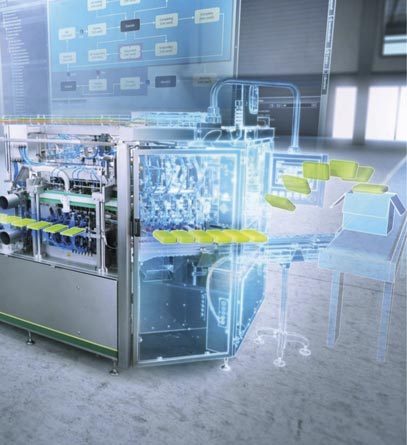A “4.0-Ready” Packaging Machine
A successful meeting between the real world and the virtual world: the creation of the “Digital Twin” for a high-tech automatic packaging machine has made it possible to reduce time and risk during commissioning. For the development of this machine, Siemens supported Easysnap with a unique and integrated hardware/software platform.
by Silvia Crespi
At the latest edition of the Mechatronics Forum “Enabling technologies for the 4.0 digitalization of the industry” at the Mole Vanvitelliana of Ancona, Siemens illustrated the potential of integrating hardware and software technologies capable to meet the needs of an increasingly interconnected and fast world, on which the new business models are based.
In their speech within the “Design” conference session, Siemens presented a real case study focused on digitalization and industrial automation towards Industry 4.0 in the packaging industry production processes.
At the start of his presentation, Tommaso Valle, Pack Team Manager at Siemens Italia, described, in short, the technological drivers that are transforming the industry. As a matter of fact, we are witnessing an evolution both in the way the product comes to life and in the way it is manufactured and modified over time.
The way that machine manufacturers should follow is to embrace enabling technologies to transform the organization in which they operate in a digital business. In order to obtain the full benefits, the transformation process should be applied to the entire value chain: from Product design and Production Planning to Production Engineering and Production Execution up to the product Service life.
All these stages must have a common “Digital connection” that makes it possible to shorten the innovation life cycle and allow the company to transform continuously.
The Siemens solution is that of the digital prototype, or “Digital Twin”, which makes it possible to simulate the machine production and operation before its actual implementation: an approach that involves a cultural change of the way of working.
Virtual commissioningof a packaging machine
The case study presented concerns the Virtual Commissioning of a packaging machine, where the creation of the “digital twin” has allowed considerable savings in terms of development time.
In the classic engineering process, Commissioning is achieved through the stages of mechanical design, electrical design and software design, often developed separately and subsequently (not in an integrated and concurrent way). The optimized engineering process exploits the advantages of the digital model to achieve optimized design (virtual machine development with short feedback cycles).
Thanks to the optimized development and simulation, the time saved in the commissioning stage is considerable. The machine digital prototype makes it possible to test changes easily, eliminating the risk of physical damage to the machine.
This process was applied to the Pulsar 351 automatic packaging machine by Easysnap Technology, a company from Emilia specialized in certified packaging machines for the food, pharmaceutical, cosmetic and medical industries, owner of Easysnap®, a patented technology that allows you to open packs for liquid and semi-liquid products by using one hand.
Pulsar 351, an innovative application in terms of performance and flexibility, was created by following an equally innovative workflow: a complete 4.0 path that starts with the creation of a virtual twin, a real digital twin.
A new approach to the time managementof the order
The machine is particularly sophisticated and flexible, equipped with 12 axes, synchronisms, format changes and various robotic picking options. For its development, a unique and integrated HW/SW platform was created. The creation of the digital twin made it possible to fill the gap between mechanical development and software development and to perform a virtual test before the real one. The software was tested without a physical machine, as well as collision tests (which avoided the risk of mechanical failure). Hardware and software changes to the machine were tested prior to installation.
In short, it was a matter of using a totally new approach to the time management of the order. An approach that also affected predictive maintenance, thanks to the condition monitoring system.
Finally, using the cloud has created added value both for the OEM and for the end-users.

